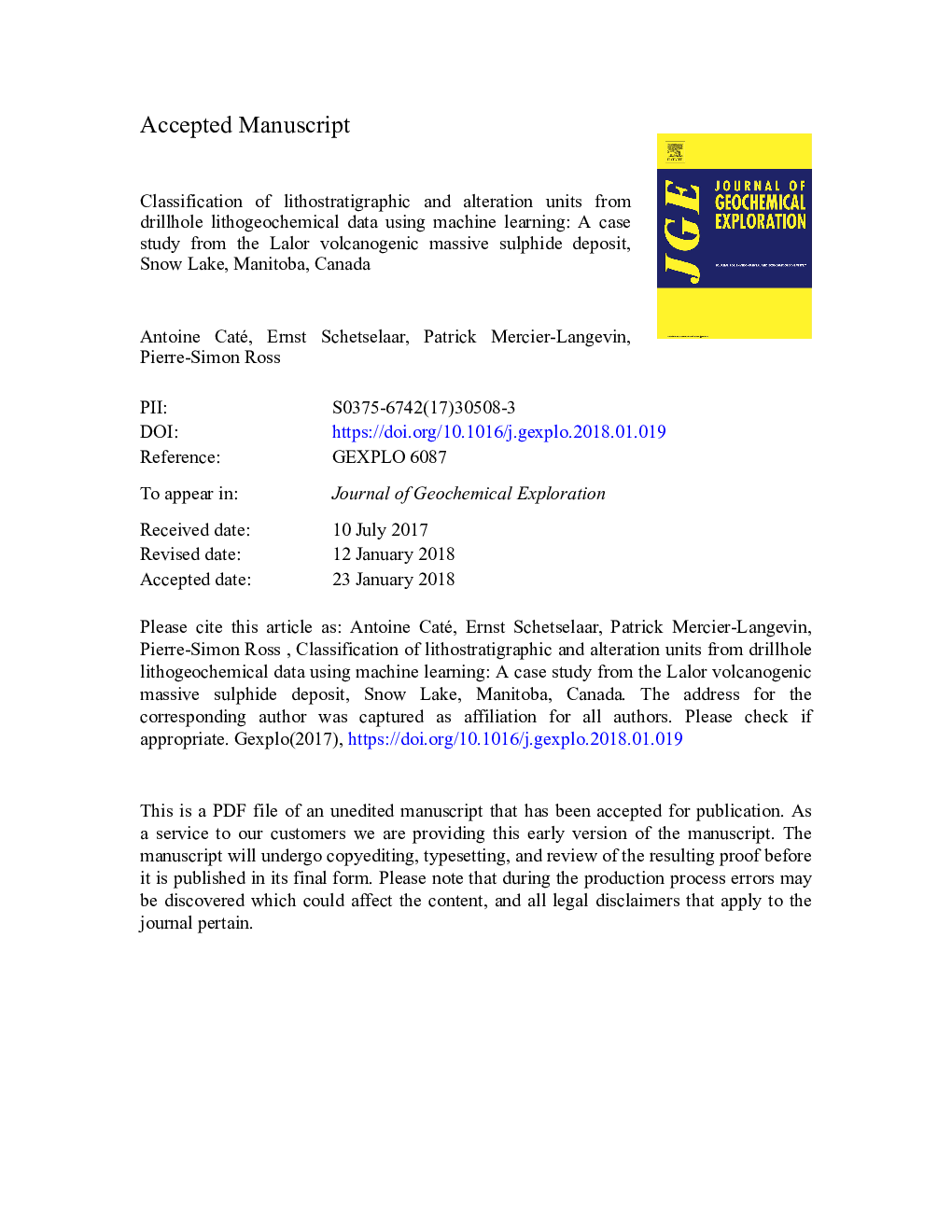| Article ID | Journal | Published Year | Pages | File Type |
|---|---|---|---|---|
| 8866003 | Journal of Geochemical Exploration | 2018 | 41 Pages |
Abstract
Classification of rock types using geochemical variables is widely used in geosciences, but most standard classification methods are restricted to the simultaneous use of two or three variables at a time. Machine learning-based methods allow for a multivariate approach to classification problems, potentially increasing classification success rates. Here a series of multivariate machine learning classification algorithms, together with different sets of lithogeochemistry-derived variables, are tested on samples collected at the Lalor Zn-Cu-Au volcanogenic massive sulphide deposit, to discriminate volcanic units and alteration types. Support Vector Machine and Ensemble method algorithms give the best performance on both classification exercises. Untransformed chemical element concentrations with high classification power are the best-performing variables. Classification success rates are equal or better than those obtained using standard classification methods and are satisfactory enough for the use of the resulting predictions for 2D and 3D modelling of geological units.
Related Topics
Physical Sciences and Engineering
Earth and Planetary Sciences
Economic Geology
Authors
Antoine Caté, Ernst Schetselaar, Patrick Mercier-Langevin, Pierre-Simon Ross,
